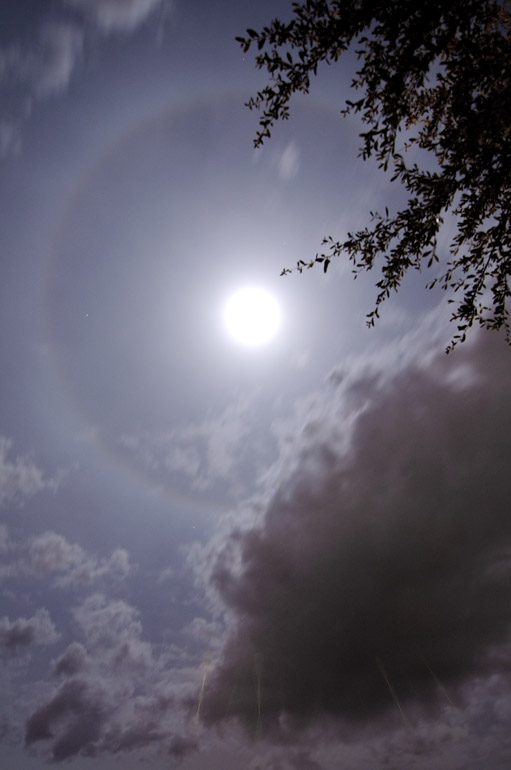
Reflected sunlight and high clouds create a halo effect around the moon early on New Year's Day. Darker rain clouds move in at the lower levels of the atmosphere.
The year 2009 ended and the year 2010 began with a full moon, the second in the month of December. Such an occurrence has become popularly known as a blue moon, which more likely got its name from the idiom, not the other way around.
The term's apocryphal beginnings can be attributed to a 1946 Sky & Telescope article that misinterpreted the Farmers' Almanac, which is published in Lewiston, Maine (best state in the Union). The agricultural bible assigned the name "blue moon" to the third full moon in a season with four of them. (Seasons typically have three full moons.) It didn't necessarily mean there were two in one month.
Before that, "blue moon" referred to either somberness or rarity, as "once in a blue moon" now conveys.
And to get even more technical, the moon wasn't ever full following its rise just after sunset Thursday in the United States. That opportunity would have come in the afternoon, before it was visible.
That's all according to my exhaustive Google searching. Astronomy can be confusing, and there's nothing like the Internet to confound people further. There's lots of mythology related to Earth's natural satellite, including one belief that its pull can determine when a pregnant mother gives birth. A story to that effect was published in my newspaper today. Good grief.
Though what I write here, as best as I can tell, is true, it doesn't matter much. What matters is that the moon was rather rad in appearance early Friday morning. High, wispy clouds caused the sunlight reflected off the lunar surface to create a halo. After the night grew old, lower storm clouds moved in, at which time I made the above exposure.
The rain wasn't far behind.



No comments:
Post a Comment